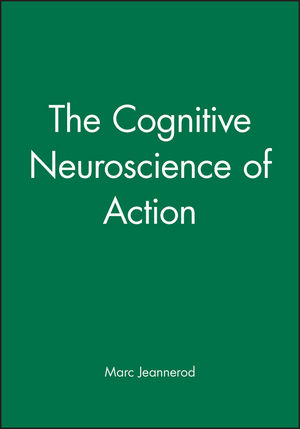The Cognitive Neuroscience of ActionISBN: 978-0-631-19604-4
Paperback
252 pages
March 1997, Wiley-Blackwell
 This is a Print-on-Demand title. It will be printed specifically to fill your order. Please allow an additional 10-15 days delivery time. The book is not returnable.
|
||||||
1.1. Action as a Coordination Problem.
1.2. Internal Models and the Purpose of Actions.
1.3. Motor Engrams.
1.4. Outline.
Part II: Neural Substrates for Object Orientated Actions:.
2.1. Visuomotor Coordination as a Dissociable Visual Function.
2.1.1. The Two-Visual-Systems Hypothesis.
2.1.2. Two Cortical Visual Systems.
2.1.3. Visuomotor Channels.
2.2 Neural Coding in the Visuomotor (dorsal) Pathway: Reaching Movements.
2.2.1. Reaching Neurons in the Parietal Cortex.
2.2.2. The Role of Motor and Premotor Cortex.
2.3 Neural Coding in the Visuomotor (dorsal) Pathway: Grasping Movements.
2.3.1. The Pattern of Grip Formation.
2.3.2. Neural Mechanisms Involved in the Control of Visually Guided Grasping.
2.3.2.1. Motor Cortex.
2.3.2.2. Parietal Cortical Areas.
2.3.2.3. Premotor Cortex Neurons.
2.4. Predetermined Motor Patterns: The Schema Approach.
Part III: Task-Dependent Representations for Action:.
3.1. Relevance of Neural Systems to Task-Dependent Representations of Action.
3.1.1. Effects of Posterior Parietal Lesions on Object-Orientated Actions.
3.1.2. Testing Object-Oriented Behavior.
3.1.3. Two Illustrative Clinical Cases.
3.2. Object-Oriented Behaviour in Lesions of the Ventral System.
3.3. Brain Activity Mapping During Object-Oriented Actions.
3.4. The Representation of Object-Oriented Actions.
3.4.1. Classifying Object Attributes.
3.4.2. The Frame of Reference Problem.
3.5. Task Dependent Dissociations of Visumotor and Perceptual Responses.
3.5.1. Motor Vs Perceptual Responses.
3.5.2. Time-Based Dissociations.
3.5.3. Implicit Functioning of Pragmatic Representations.
3.5.4. The Semantic Penetration of Pragmatic Representations.
3.6. A Note on Apraxia.
Part IV: The Contribution of Mental Imagery to Understanding Motor Representations:.
4.1. Motor Imagery, A "First Person" Process.
4.2. What is Represented in Motor Images.
4.2.1. The Problem of the Representation of Time.
4.2.2. The Representation of Motor Rules.
4.2.3. Representation of Motor Constraints and Potentialities.
4.3. Physiological Correlates of Mental Simulation of Movement.
4.3.1. Muscular Activity.
4.3.2. Autonomic Nervous System.
4.3.3. Brain Activity.
4.4. The Effects of Mental Training.
4.5. Motor Imagery in Clinical Disorders of Movement and Action.
Part V: Action Planning:.
5.1. A Cognitive Approach to Action Planning.
5.1.1. Mental Chronometry Paradigms.
5.2. A Neuropsychological Approach to Action Planning.
5.2.1. Anatomical Connections of the Frontal Granular Cortex.
5.2.2. Frontal Lobe Lesions in Mokeys.
5.2.3. Paradigms for Studying Neuronal Activity in Prefrontal Areas.
5.2.4. Planning Deficits Following Frontal Lesion in Man.
5.3. Study of Human Brain Activity during Motor Preparation and Action Planning.
5.4. The Role of Basal Ganglia in Action Planning.
5.5. A Synthetic Conclusion on Action Planning.
Part VI: Design for a Motor Representation:.
6.1. Requirements for Representing Neurons.
6.2. The Internal Structure of Motor Representations.
6.2.1. The Corollary Discharge Concept.
6.2.2. Comparator Models.
6.3. Testing the Validity of Comparator Models.
6.3.1. Perturbation Experiments.
6.3.2. The Role of Reafference.
6.4. Monitoring Intentions.
6.4.1. Sensations of Innervation.
6.4.2. The Problem of Awareness of Intentions.
6.4.3. Understanding Intentions of Others.
6.4.4. Imitation and Observational Learning.



